The traditional distinction between the haute couture and prêt-à-porter has always been between the custom-made and the ready-made. Haute couture clothes are singular models fitted to the body of a specific individual, while prêt-à-porter garments are produced in multiples for the mass market in standard sizes to fit many body types. Implicit in this difference is the assumption that the handwork techniques involved in the haute couture are superior to the mechanized methods of prêt-à-porter. Over the years, however, each discipline has regularly embraced the practices of the other. Despite the fact that this mutual exchange continues to accelerate, the dichotomy between the hand (manus) and the machine (machina) still characterizes the production processes of the haute couture and prêt-à-porter in the 21st century.
Instead of presenting the handmade and the machine-made as oppositional, this exhibition suggests a spectrum or continuum of practice, whereby the hand and the machine are equal and mutual protagonists in solving design problems, enhancing design practices, and, ultimately, advancing the future of fashion. It prompts a rethinking of the institutions of the haute couture and prêt-à-porter, especially as the technical separations between the two grow increasingly ambiguous and the quality of designer prêt-à-porter more refined.
At the same time, the exhibition questions the cultural and symbolic meanings of the hand-machine dichotomy. Typically, the hand has been identified with exclusivity and individuality as well as with elitism and the cult of personality. Similarly, the machine has been understood to signify not only progress and democracy but also dehumanization and homogenization. In examining these values, the show's intention is to liberate the handmade and the machine-made from their usual confines of the haute couture and prêt-à-porter, releasing them from the exigencies of the fashion system into the hands of fashion designers for whom they serve as expressions of creative impulses.
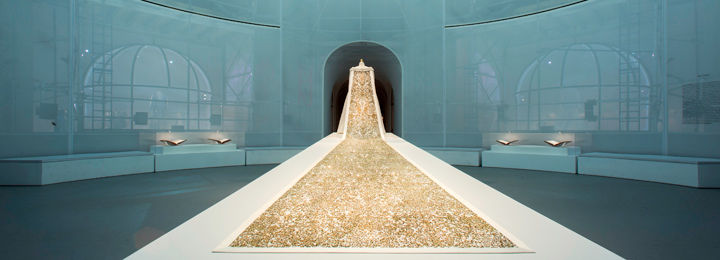
This ensemble, which Lagerfeld has described as "haute couture without the couture," exemplifies the confluence of the hand (manus) and the machine (machina). Made from scuba knit, a synthetic material, the dress is hand molded, machine sewn, and hand finished. Maison Desrues (founded 1929) hand embroidered the buttons with gold, glass, and crystals, and Atelier Montex (founded 1939) hand embroidered the medallion with glass, crystals, paillettes, anthracite cannetilles, and gold leather leaf motifs. The train of scuba knit and silk satin is machine sewn and hand finished. Lagerfeld's hand-drawn design was digitally manipulated to give it the appearance of a randomized, pixelated baroque pattern and then realized through a complex amalgam of hand and machine techniques. Atelier Lunas (founded 1993) used a heat press to transfer the rhinestones; Atelier Anne Gelbard (founded 1997) painted the gold metallic pigment by hand; and the pearls and gemstones were hand embroidered by Cécile Henri Atelier (founded 1982).
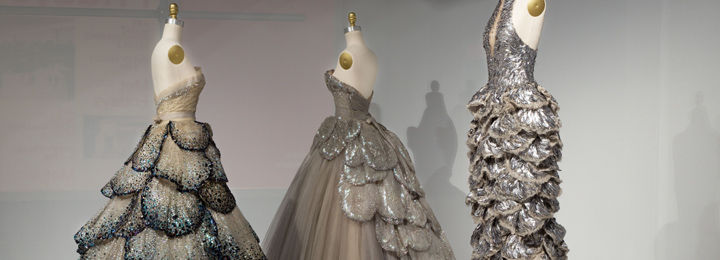
The elaborate embroideries, featherwork, and artificial flowers of the haute couture are made by a coterie of paruriers (adornment makers) whose practices have remained surprisingly unchanged for more than a century.
Traditional embroidery is needlework that adorns woven or knitted textiles. The basis of the technique, which has infinite permutations, derives from three types of stitches: flat, looped, and knotted. Among the more significant developments in hand-embroidery techniques was Louis Ferry-Bonnechaux's mid-1860s invention of Luneville embroidery (also known as tambour beading). The practice uses a wooden frame to stretch the fabric and a small hook to anchor various decorative elements to the textile with chain stitch. Some of the greatest innovations in hand embroidery have developed with the availability of new materials, such as cellulose acetate and other synthetics. These fabrics enable a diverse range of surface embellishments, while thermoplastic film allows designers to heat transfer elements to a textile surface without stitching.
Maisons that specialize in embroidery include Hurel, Lanel, Lesage, Montex, and Broderies Vermont. These ateliers primarily supply the haute couture, although several, especially Lesage, are increasingly servicing prêt-à-porter. While Paris remains the center of specialist embroiderers, India is gradually becoming an important locus of skilled craftspeople. Indeed, prêt-à-porter designers who employ hand embroidery rather than machine embroidery typically rely on the skills of artisans in India, as do those seeking handmade featherwork and artificial flowers.
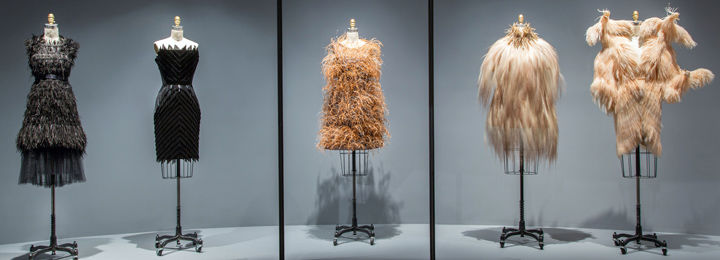
The Latin term plumarius was once used to describe both the featherworker and the embroiderer. Indeed, among the maisons specializing in featherwork today, including Février, Legeron, Lemarié, Marcy Coté Plume, and Nelly Saunier, several combine the two trades into one practice.
Typically, the skills required in featherwork increase as the manipulation of the plumes nears completion. At the outset, feathers are cleaned with soap and water, dried, and sorted. Next the plumes are bleached, which, historically, was achieved through the stoving process, involving exposure to sulphur dioxide fumes. Those feathers not valued for their natural hue are dyed.
The feathers are then shaped through various means. Some are trimmed, scorched, and finished through reduction. More commonly, however, plumes are built up. Through meticulous handwork the individual barbs of a feather are knotted together, adhered with glue, and threaded or wrapped with wire. The final step often involves curling, a process in which small groups of barbs from a vaned feather are pulled across a knifelike metal tool.
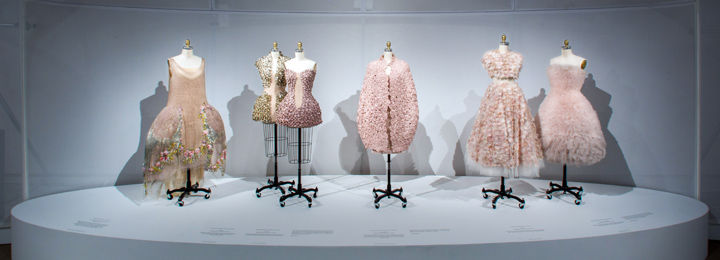
Like feathers, artificial flowers are a significant form of embellishment in the haute couture as well as in prêt-à-porter. Among the maisons producing handcrafted floral garnitures are Guillet, Legeron, and Lemarié. In addition to artificial flowers, many of these ateliers also produce featherwork and embroidery.
Creating an artificial flower begins with preparing the material, which is usually treated with flour or gelatin to improve its malleability. Petals are then cut, most often in layers to enable 12 to 24 to be created simultaneously. The method for metal punching flower shapes remains largely unchanged, although machines rather than mallets are now used for stamping.
Small stacks of petals are then cold-water dyed in a specialized bath of alcohol and pigment. The solution is mixed by hand and calibrated to achieve the intended color, and the material may need to be dipped and dried several times to attain the desired effect. As the petals are shaped, crimped, and scored into place, they are worked atop pillows. Usually, a flower is finished by gluing and anchoring the petals together with thread.
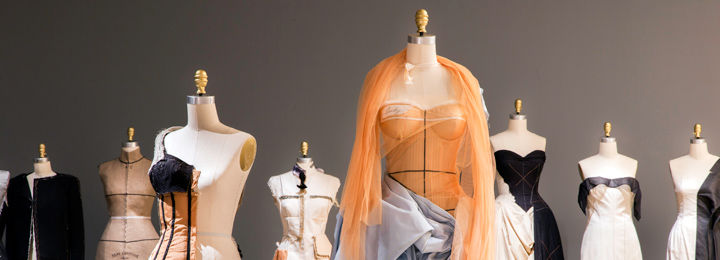
French in origin, the term toile translates as "cloth" or "canvas." Since the 19th century, the word has been used to describe a prototype garment or preliminary three-dimensional sketch for a finished fashion design. Toiles are commonly referred to as "muslins," because they tend to be constructed from linen or cotton muslin, an inexpensive, unbleached plain-weave textile that presents a range of draping and tailoring possibilities.
In the haute couture (and for asymmetrical designs), a full toile is created, while in prêt-à-porter (and for symmetrical designs) a half toile is made (the right side of the design). Executing a designer's vision in simple muslin encourages not only greater creative freedom and experimentation but also refinements in fit, the key to the haute couture.
The history of toiles relates closely to developments in dressmakers' dummies. Alexis Lavigne, a French professor, introduced one of the earliest patented dummies in the 1850s. His figures—composed of papier-mâché lightly padded with cotton batting or wadding and covered in pieced and seamed canvas—contributed to the precision with which a garment could be fitted and gradually evolved to help delineate measurements and geometries essential to dressmaking. In 1867 a student of Lavigne's, the Belgian sculptor Frédéric Stockman, established a mannequin company that later became Siegel and Stockman, one of the largest suppliers of dress forms to couture houses today.
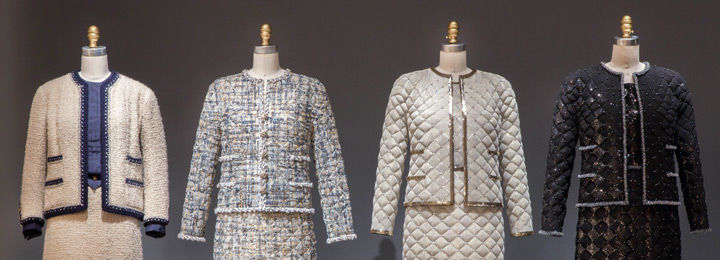
The traditional structure of a maison de couture is eloquently described through the nomenclature for the two ateliers, or workrooms: tailleur and flou. Tailleur, the tailoring division, specializes in suits and structured garments. Stemming from the French term tailler (to cut or hew), tailleur translates as "one who cuts." Following the advent of the sewing machine in the 19th century, stitching and assembling an article of clothing became relatively easy to apprehend. But to understand the intricacies of manipulating fabric on the grain, and to envision how to most adroitly use an expanse of cloth with minimal surplus—all the while exercising precision and accuracy when cutting—is an art form in its own right.
In contrast, the atelier flou, the dressmaking division, specializes in draping and soft construction. Where the term tailleur implies lucidity, the word flou suggests something hazy, blurred, or ambiguous. Less beholden to line and structure, a garment created within the atelier flou responds to the hand of the fabric and the draping or layering around the figure. Although patternmaking and precision of fit are integral to both divisions, and the method of realizing an original design is contingent on the practices of the head designer, a garment that originates in the atelier tailleur is likely to begin as a flat pattern derived from a sketch, whereas a garment that originates in the atelier flou is likely to evolve on the dressmaker's form.
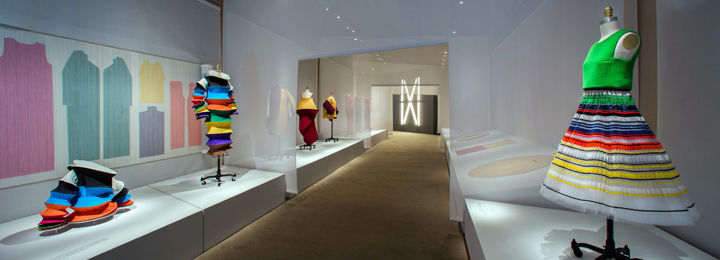
Pleating has a long history in stylish apparel. When the French fan maker Martin Petit invented the plissage au carton, or paper mold, in the 1760s, pleating solidified its preeminence in fashionable dress. Precipitated by the popularity of the hand fan, the technique was further advanced in the mid-19th century by one of Petit's descendants and is still used today by maisons such as Lognon.
In the 20th century, fashion designers developed proprietary pleating techniques in tandem with technological advancements. Mariano Fortuny developed a method of pleating textiles by hand that remains shrouded in mystery. The pleats were not set permanently, so clients had to send their gowns back to the Fortuny workshops to have the pleats reset if they were dampened or flattened.
With the emergence of synthetic textiles came the first techniques for permanently set pleats. Mary McFadden's inventive method, called "Marii" after the designer, used a synthetic charmeuse fabric woven in Australia, dyed in Japan, and pleated in the United States. Her innovations were continued by Issey Miyake, who introduced a patented process called "Garment Pleating," which involves pleating clothes rather than textiles. The process entails constructing garments at two or three times their intended size, and then precisely folding, ironing, and placing the sewn ensembles, sandwiched between paper, into a heat press.
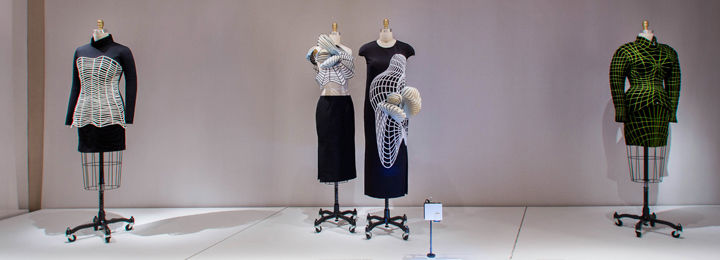
While the pleated garments of Mariano Fortuny, Mary McFadden, and Issey Miyake pay homage to classical drapery, the supple silk jersey gowns of Madame Grès are distinguished by an unequivocal classicism. For her, pleating was a means of hand fitting and shaping a dress without cutting and seaming.
The classical converges with the mathematical in ensembles by Junko Koshino, Thierry Mugler, and Noa Raviv. Combining handmade and machine-made elements and influenced by distorted digital drawings, their gridlike patterns evoke pleating through linear repetition that creates the optical illusion of volume. Junya Watanabe's garments, which reference Pierre Cardin's famous "Cardine" dresses of the 1960s, extend this idea of dimensionality by invoking the golden ratio, a geometric relationship promoted as an ideal by ancient Greek mathematicians.
Mathematical experiments also characterize Miyake's "132 5." collection, the culmination of his lifelong interest in the metamorphosis of two-dimensional cloth into three-dimensional clothing. Inspired by the work of computer scientist Jun Mitani, the collection, which comprises 10 basic patterns, was designed using a computer modeling program. Entirely machine-made, the geometric shapes require the hands of their wearers to transform them into structured clothing. Reconciling the hand and the machine, these creations explore the possibility for endless variation through human intervention.
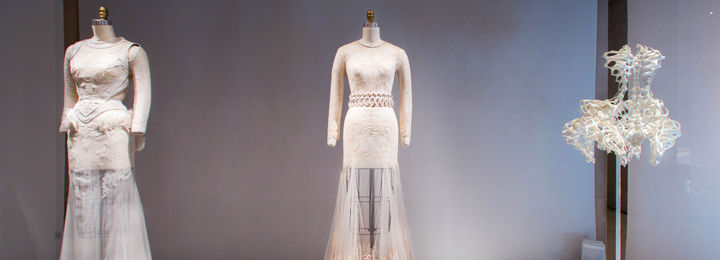
The techniques involved in lace making were introduced during the 15th century and rose to prominence by the end of the 16th century. Although many varieties of lace exist today, handmade lace is traditionally classified into two categories: bobbin (or pillow lace) and needlepoint (or point lace). In contrast to cutwork and drawn-thread work, which resemble lace but preceded its invention, bobbin and needlepoint lace employ additive rather than subtractive techniques.
Lace making initially involved a network of artisans specializing in the different stages of production: creating the netted ground, repairing, and finishing. Given the investment of time and labor handmade lace requires, various inventors sought to create machinery that could replicate it. In 1809 the Englishman John Heathcoat patented the first example, known as the Bobbinet machine, which created a netted ground that could be finished with decorative hand embroidery. John Leavers improved upon Heathcoat's invention in 1813, and eventually adapted a jacquard mechanism to produce lace complete with net and pattern.
The industrial revolution ushered in additional machines with greater speed and efficiency, including the Schiffli embroidery machine. By the mid-20th century the Raschel knitting machine was being used to manufacture lace quickly and economically. Today machine-made lace predominates in both the haute couture and prêt-à-porter yet maisons such as Darquer and Sophie Hallette have kept earlier forms of handmade lace in production.
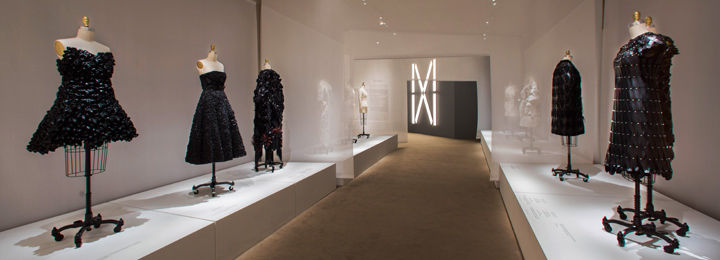
The métier that specializes in fine leatherwork is known as maroquinerie (a French term derived from a type of goatskin exported from Morocco) and includes such maisons as Bodin-Joyeux. While leatherworking practices are deeply embedded in the long history of dress and accessories, the delicate processes and decorative techniques associated with the haute couture evolved during the 19th century. The introduction of chromium salts made it possible to tan or cure animal hides more quickly and to produce a soft and pliable leather akin to a textile.
In the late 19th century, fashion designers began to employ leather with increasing dexterity, embellishing garments with decorative buttons, appliqués, and cutwork trimmings. During the 1920s, so-called reptilian simulations—created by compressing and stamping leather to emulate the skins of snakes and other animals—became popular. In addition to faux finishings, the 1920s saw the advent of polyvinyl chloride, or PVC, the first synthetic leather to enter high fashion. In development since the late 19th century and first patented in 1913, PVC's aesthetic potential in fashion was fully realized in the 1960s alongside sociopolitical transformations.
While the late 20th century witnessed new experiments in the decorative possibilities of the dyeing, cutting, stamping, and finishing of leather, it is only with the development of recent technologies such as laser cutting, ultrasonic welding, and synthetic biology that the novelties of the 1920s and 1960s have been equaled.
Karl Lagerfeld (French, born Hamburg, 1938) for House of Chanel (French, founded 1913). Wedding ensemble (back view), autumn/winter 2014–15 haute couture. Courtesy of CHANEL Patrimoine Collection. Photograph © Nicholas Alan Cope